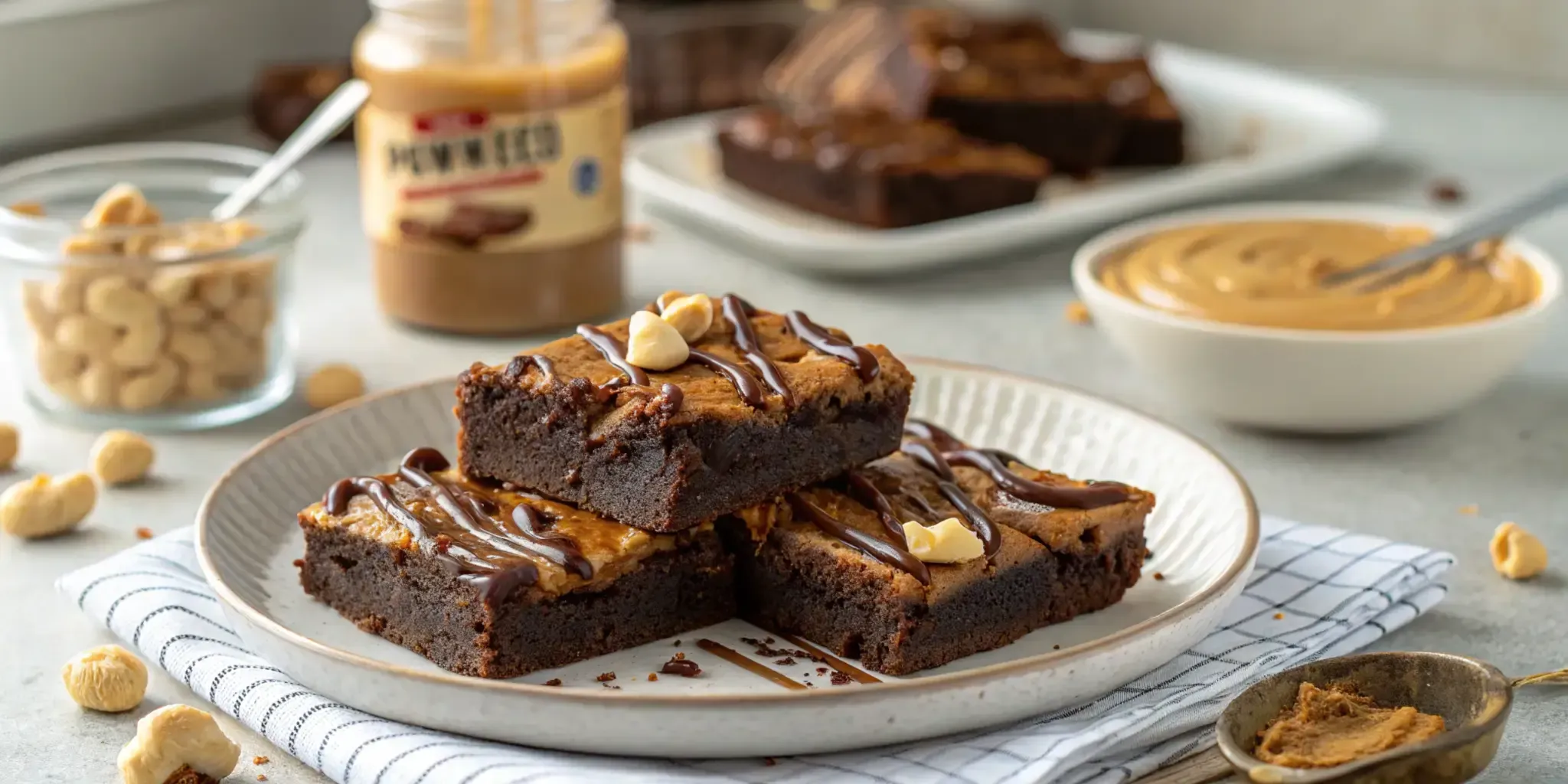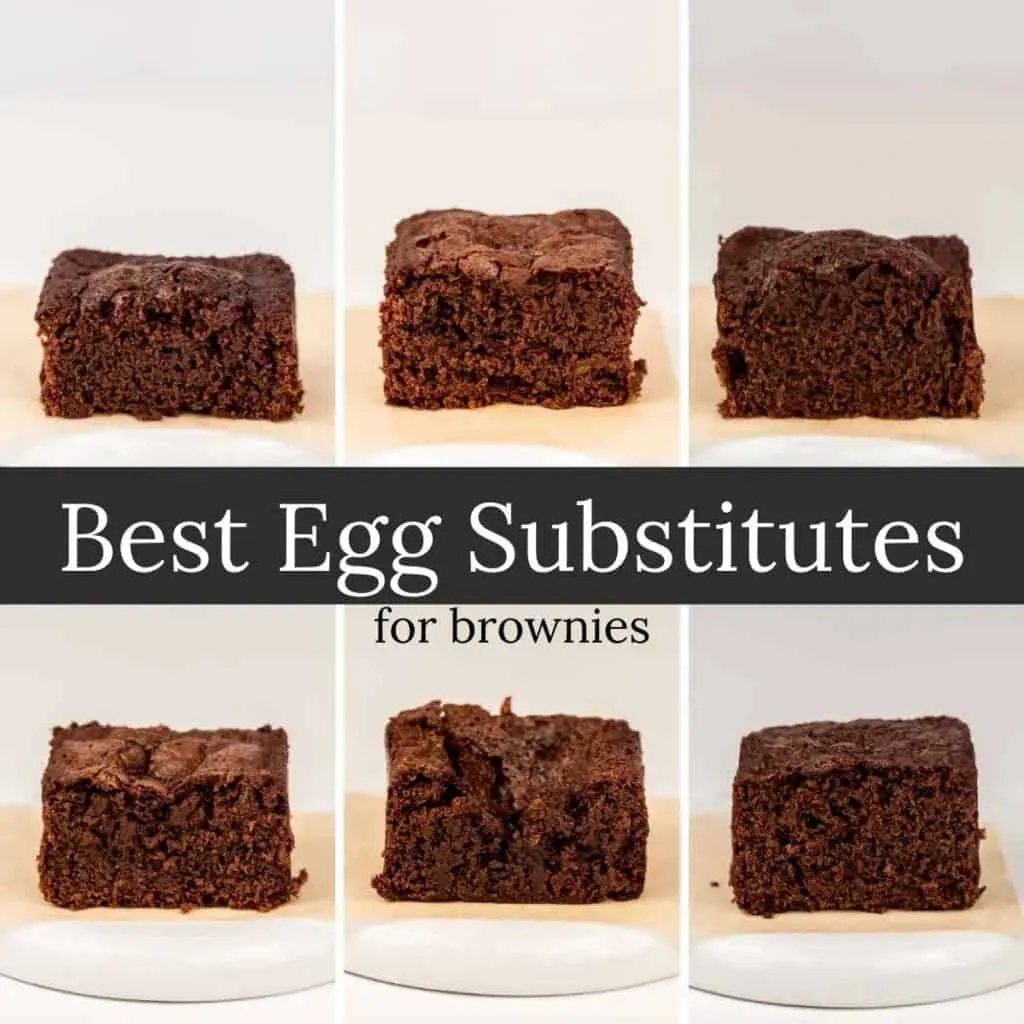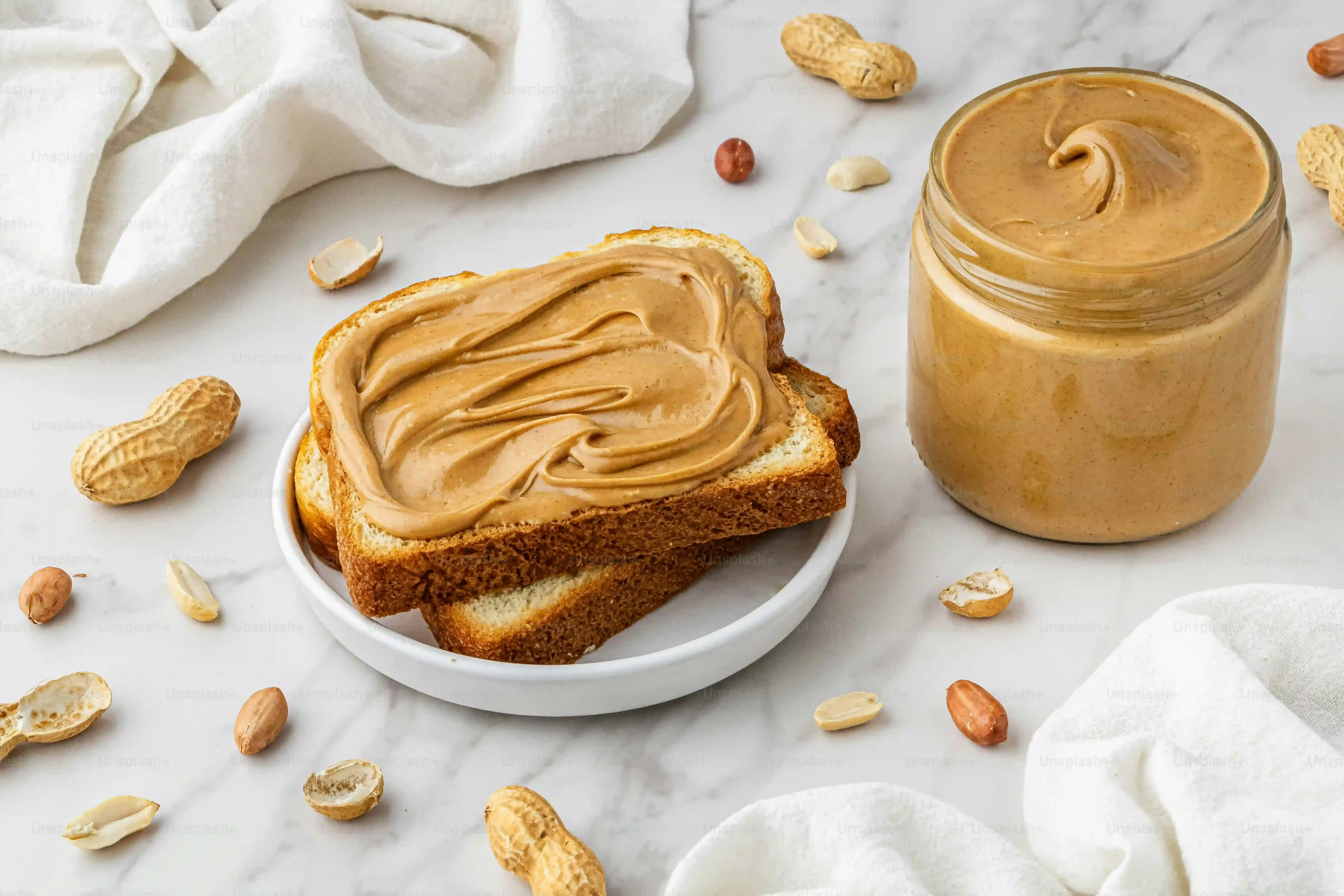Table of Contents
Running out of eggs when the brownie craving hits feels like a minor crisis. Or maybe you're baking for someone who can't eat eggs. Whatever the reason, finding a suitable substitute can be tricky. People often wonder,can you substitute peanut butter for eggs in brownies? It’s a question that pops up frequently in egg-free baking circles.
Can You Substitute Peanut Butter for Eggs in Brownies?
The Short Answer: Yes, But There's a Catch
So, you're standing in your kitchen, brownie mix open, and staring into an empty egg carton. The thought pops into your head:Can You Substitute Peanut Butter for Eggs in Brownies?Good news, in many cases, you absolutely can. Peanut butter, especially the smooth, creamy kind, has properties that mimic some of what eggs do in baking. It's a binder, helping to hold the dry ingredients together. It adds fat, contributing to moisture and richness. And it definitely adds flavor, which, let's be honest, is why many of us are even considering this in the first place.
Understanding What Eggs Do (And What Peanut Butter Doesn't)
Eggs aren't just about binding, though. They also provide lift and structure through proteins that coagulate when heated. They contribute to the overall texture and that classic crackly top some brownie recipes brag about. Substituting peanut butter means you're leaning heavily on its binding and moistening abilities, but you're going to lose some of that airy lift and structure that eggs provide. Your brownies will likely turn out denser, fudgier, and with a distinct peanut butter taste. Think of it less as a perfect replacement and more as creating a slightly different, albeit delicious, dessert.
- Expect a denser, fudgier texture.
- The brownies will have a strong peanut butter flavor.
- Don't anticipate the same lift or classic crackle top.
- It works best in recipes that are already quite dense or fudgy.
How Peanut Butter Acts as an Egg Substitute in Brownies

How Peanut Butter Acts as an Egg Substitute in Brownies
The Binder and the Glue
Think of peanut butter as the sticky stuff that holds everything together when you can't use eggs. Eggs contain proteins that link up and create a network when they heat up in the oven. Peanut butter, while lacking those specific proteins, has its own binding power thanks to its combination of fat and solids. It coats the flour and sugar particles, helping them stick to each other. It's not quite the same structural integrity you get from eggs, which is why your brownies will be denser, but it absolutely serves the purpose of preventing your creation from crumbling into a pile of dry ingredients.
Adding Richness and Moisture
Eggs bring moisture and fat to the party, making baked goods tender and rich. Peanut butter doubles down on this. It's loaded with fat, which is fantastic for keeping brownies moist and giving them that desirable fudgy texture. This is where peanut butter shines as a substitute; it ensures your egg-free brownies won't turn into dry, sad bricks. The fat also contributes to a smoother mouthfeel, which is a nice bonus, assuming you like the taste of peanut butter drowning out everything else.
- Peanut butter's fat keeps brownies moist and fudgy.
- It coats dry ingredients, preventing crumbling.
- It contributes richness similar to egg yolks.
- The high fat content can make the texture quite dense.
Impacting Texture and Flavor: How Peanut Butter Acts as an Egg Substitute in Brownies
Ultimately,how peanut butter acts as an egg substitute in browniesis by providing fat, moisture, and binding, but at the cost of lift and a neutral flavor base. You're trading the airy, structured crumb that eggs help create for a much heavier, chewier result. And, obviously, everything is going to taste like peanuts. If you're a peanut butter fanatic, this is a feature, not a bug. If you're hoping for a classic chocolate brownie experience without eggs, peanut butter is probably not your best bet. It fundamentally changes the character of the brownie.
Tips for Substituting Peanut Butter for Eggs When Baking Brownies

Tips for Substituting Peanut Butter for Eggs When Baking Brownies
Pick Your Peanut Butter Wisely
Alright, so you're committed to this peanut butter brownie adventure. The first tip forsubstituting peanut butter for eggs when baking browniesis to be picky about your peanut butter. Go for smooth, processed peanut butter, like the stuff that doesn't separate. Natural, oily peanut butter can make your batter too greasy and unpredictable. The consistent texture of processed peanut butter helps ensure it blends smoothly into the batter and acts as a more reliable binder. Think Jif or Skippy, not the kind you have to stir for five minutes.
The general rule of thumb people toss around is using about 3 tablespoons of peanut butter per egg called for in the recipe. This isn't an exact science, mind you. It's a starting point. Brownie recipes vary wildly in their fat and moisture content already, so you might need to tweak it slightly. Too little, and your brownies might crumble; too much, and they'll be greasy bricks. Start with the 3-tablespoon ratio and be prepared to experiment a little next time if the texture isn't quite right.
Adjust Other Ingredients for Balance
Swapping eggs for peanut butter isn't just a straight substitution; it's a balancing act. Since peanut butter adds significant fat and moisture, you might need to slightly reduce other wet ingredients, like oil or butter, in the original recipe. This prevents the brownies from becoming excessively greasy or dense. It's a delicate dance, and there's no universal formula, but keeping an eye on the overall wet-to-dry ratio is crucial. If your batter looks too wet after adding the peanut butter, hold back a tablespoon or two of the liquid fat.
Also, consider the sugar. Eggs contribute to that lovely crackly top because their proteins interact with sugar. Peanut butter doesn't do that. If the crackle top is important to you (and honestly, who doesn't love it?), you might need to look into other tricks, like melting the butter with the sugar before adding wet ingredients, which helps create that sugary crust independently of eggs. Don't rely on the peanut butter alone to deliver that classic texture.
- Use smooth, processed peanut butter (approx. 3 tbsp per egg).
- Slightly reduce other liquid fats (oil, melted butter) if batter seems too wet.
- Don't expect a classic crackle top from peanut butter alone.
- Consider adding a pinch more baking powder for a touch of lift, though results vary.
Mind Your Baking Time and Texture Expectations
Because peanut butter brownies are denser and contain more fat than their egg-bound counterparts, they might bake slightly differently. Keep a close eye on them in the oven. They might take a little longer, or they might cook faster depending on the recipe's original fat content and your oven. The toothpick test still works – it should come out with moist crumbs, not wet batter. However, the texture will be fudgier and heavier from the get-go, so don't expect the same light crumb development you'd see with eggs.
Ultimately, when yousubstitute peanut butter for eggs in brownies, you are making a trade. You get an egg-free, moist, and distinctly peanut-flavored brownie. You sacrifice some of the traditional structure, lift, and neutral base that eggs provide. Embrace the fudginess and the peanut punch. If you're looking for an exact replica of an egg-based brownie, peanut butter isn't the magic bullet. But if you're open to a delicious, slightly different kind of brownie, give it a shot. It's certainly better than no brownies at all.
What to Expect When You Substitute Peanut Butter for Eggs

What to Expect When You Substitute Peanut Butter for Eggs
A Different Kind of Texture
So, you bit the bullet and swapped the eggs for peanut butter.What to Expect When You Substitute Peanut Butter for Eggsin your brownie recipe? First off, get ready for a texture shift. Eggs provide lift and help create that slightly cakey or delicately fudgy crumb depending on the recipe. Peanut butter, on the other hand, is heavy and dense. Your brownies will likely be significantly fudgier, maybe even a little chewy, and definitely less airy. Think rich, dense fudge rather than a light cakey square. It's not bad, just different. If you were aiming for a light, fluffy brownie, you're going to be disappointed. If you love dense, moist treats, you might be pleasantly surprised.
The Dominant Flavor Profile
This might seem obvious, but it bears repeating: your brownies are going to taste like peanut butter. A lot. Eggs have a relatively neutral flavor in baked goods, allowing the chocolate to shine. Peanut butter muscles its way in. This is great if you're making chocolate peanut butter brownies, which, let's be honest, is probably the most common reason someone tries this swap. But if you were hoping for a pure chocolate experience with just a structural substitute, the peanut butter flavor will likely overpower the chocolate notes. It's a bold choice, flavor-wise, and it defines the final product.
Expectation with Eggs | Expectation with Peanut Butter |
|---|---|
Lighter, more varied texture | Denser, fudgier texture |
Neutral flavor base | Strong peanut butter flavor |
Potential for crackly top | Less likely to develop a crackly top |
Accepting the Outcome
Ultimately, when you askWhat to Expect When You Substitute Peanut Butter for Eggs, the answer is a compromise. You're getting an egg-free brownie that holds together and is undeniably moist and rich due to the fat content. You are not getting a carbon copy of an egg-based brownie. Embrace the density, savor the peanut butter flavor, and appreciate that you managed to bake brownies without a key ingredient. It's a functional swap that yields a tasty result, provided you go into it with realistic expectations about texture and flavor. It's a solution to an egg shortage, not necessarily an upgrade to your favorite classic recipe.
The Verdict on Peanut Butter as an Egg Substitute
So,can you substitute peanut butter for eggs in brownies? The answer is a qualified yes. It's a workable solution when eggs aren't an option, leveraging peanut butter's binding and moistening properties. However, don't expect the same light, airy texture or the neutral backdrop eggs provide. You're trading the classic brownie profile for a denser, distinctly peanut-flavored square. It's a practical swap for dietary needs or pantry shortages, but approach it knowing you're making a different kind of brownie altogether.
